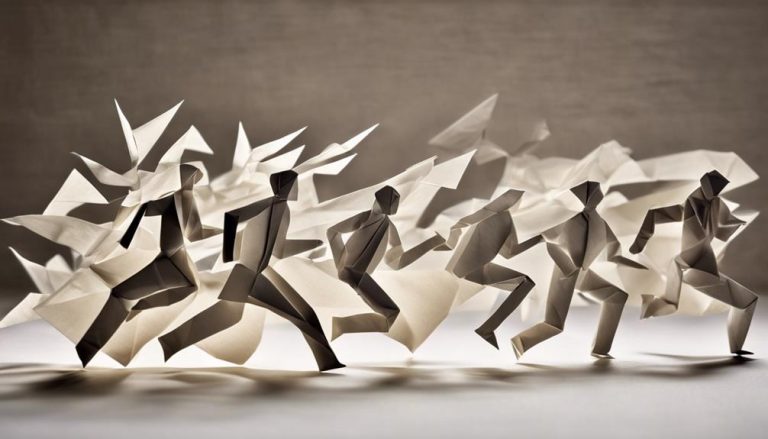General Rules of Street Hockey
Did you know that street hockey is played by an estimated 65 million people worldwide? Understanding the general rules of street hockey is essential to enjoy a smooth and fair game. From equipment requirements to penalties and game conclusion, each aspect contributes to the overall experience. Let's explore the key guidelines that govern this popular sport and ensure a fun and competitive environment for all players involved.
Equipment Requirements
When gearing up for street hockey, make sure you have the necessary equipment to stay safe and perform at your best. Safety gear is essential in street hockey to prevent injuries. Make sure to wear a helmet that fits properly and provides adequate protection for your head. Additionally, invest in knee and elbow pads to cushion any falls or collisions during the game. Gloves are crucial for protecting your hands while stick handling and blocking shots. Ensuring you have the right safety gear will allow you to play confidently and focus on your performance.
Stick handling is a fundamental skill in street hockey that requires practice and the right equipment. Choose a stick that suits your height and playing style. The stick should allow you to control the ball effectively and maneuver it with precision. Practice your stick handling skills regularly to improve your control and accuracy during games. Remember to keep your stick on the ground for better ball control and agility. Developing strong stick handling abilities will give you an edge on the street hockey court, enabling you to dribble past opponents and take accurate shots on goal.
Players and Positions
To excel in street hockey, understanding the players and positions is crucial for strategic gameplay and effective team coordination. Whether you're a seasoned player or just starting, grasping the roles each player fulfills on the team is essential for success. Here are some key points to consider:
- Offensive Strategies: As a forward, your primary goal is to score. Work on your shooting accuracy, stickhandling skills, and positioning to create scoring opportunities for your team. Communication with your teammates is vital to execute plays effectively and take advantage of the opponent's weaknesses.
- Defensive Formations: Defenders play a crucial role in protecting the goal and preventing the opposing team from scoring. Positioning, timing your tackles, and anticipating the opponent's moves are key skills to master. Understanding defensive formations and strategies will help your team maintain control of the game and limit the opponent's chances.
- Goalie Responsibilities: The goalie is the last line of defense and plays a critical role in keeping the opposition from scoring. Quick reflexes, good positioning, and communication with the defense are essential for a goalie's success. Stay focused, track the ball, and be ready to make crucial saves to keep your team in the game.
- Forward Techniques: Forwards are responsible for creating scoring opportunities and putting pressure on the opposing defense. Develop your speed, agility, and shooting skills to outmaneuver defenders and capitalize on scoring chances. Understanding how to support your teammates and create space on the rink will make you a valuable asset to your team.
Game Duration
Game duration in street hockey typically consists of two halves, each lasting a specified amount of time. The timing rules and break length are crucial aspects to keep the game organized and enjoyable for all players. Below is a table outlining the standard game durations and break lengths commonly used in street hockey:
| Game Duration | Timing Rules | Break Length |
|---|---|---|
| Youth Level | 2 halves of 20 minutes each | 5 minutes |
| Adult Level | 2 halves of 15 minutes each | 10 minutes |
| Tournaments | 3 periods of 12 minutes each | 5 minutes |
| Recreational | 2 halves of 10 minutes each | 5 minutes |
It's important to adhere to these timing rules to ensure a fair game and allow for adequate rest periods during breaks. The break length is designed to give players a chance to rehydrate, strategize, and catch their breath before returning to play. Remember, these timings may vary depending on the specific league or tournament rules in place, so always confirm the game duration before hitting the street hockey rink.
Face-offs and Start of Play
Now, as we shift our focus to Face-offs and Start of Play in street hockey, understanding the rules and techniques for these crucial moments can significantly impact the flow and outcome of the game. When it comes to face-offs, having the right strategies and positioning can give your team the upper hand right from the start:
- Be Ready: Ensure you are in the proper position and ready to react as soon as the official drops the ball. Anticipating the drop can help you gain possession quickly.
- Communicate: Coordinate with your teammates to plan out face-off strategies. Clear communication can help in executing planned moves effectively.
- Study Your Opponent: Pay attention to your opponent's tendencies during face-offs. Understanding their moves can help you counteract and win crucial possessions.
- Stay Agile: Be quick on your feet and be prepared to adjust your positioning based on the situation. Flexibility is key to winning face-offs consistently.
Moving on to the start of play, mastering the techniques and timing can set the tone for the entire game:
- Quick Start: As soon as the game begins, be ready to jump into action. A swift start can catch the opposition off guard.
- Team Coordination: Work with your teammates to ensure everyone is on the same page regarding the initial plays and strategies.
- Maintain Pressure: Apply pressure right from the start to control the pace of the game and keep the opposing team on their toes.
- Stay Focused: Concentrate on executing the start of play techniques accurately to establish early dominance and momentum.
Ball Handling Rules
When handling the ball in street hockey, your grip and control are essential for maintaining possession and executing plays effectively. Mastering stickhandling techniques and dribbling skills can give you the edge on the court. To excel in ball control, practice is key. Work on your hand-eye coordination to maneuver the ball swiftly and with precision.
Developing offensive tactics is crucial in street hockey. Utilize your stickhandling skills to outsmart opponents and create scoring opportunities. Dribbling the ball effectively can help you navigate through tight spaces and evade defenders. By incorporating quick changes in direction and pace, you can keep your adversaries guessing and create openings to advance towards the goal.
Remember, ball control is not just about individual skill. It also involves understanding the flow of the game and working cohesively with your teammates. Communication and coordination are vital in executing successful offensive plays. By combining your dribbling abilities with strategic team movements, you can increase your chances of scoring and dominating the game.
In street hockey, the ball is your weapon, and how you handle it can determine the outcome of the match. Embrace the challenge of perfecting your ball-handling skills, and watch as your performance on the court reaches new heights.
Passing and Shooting
Enhancing your passing and shooting skills in street hockey can elevate your gameplay to a new level of precision and teamwork. To become a formidable player, focus on improving your shooting accuracy and mastering various passing techniques. Here are some tips to help you excel in these areas:
- Shooting accuracy: Practice your shot regularly to increase your accuracy. Work on aiming for specific spots in the goal to keep the goalie guessing and improve your scoring chances.
- Passing techniques: Experiment with different types of passes, such as saucer passes and backhand passes, to keep your opponents on their toes. Practice passing with both hands to become a versatile playmaker on the rink.
- Offensive strategies: Develop a good understanding of offensive positioning to create scoring opportunities for your team. Learn to anticipate your teammates' movements and make quick, accurate passes to maintain possession and create scoring chances.
- Defensive positioning: Focus on your defensive positioning to disrupt the opposing team's plays and regain possession of the ball. Stay between the opponent and your goal, and be ready to intercept passes to thwart scoring attempts.
Checking and Physical Contact
When it comes to street hockey, knowing the rules of legal body checking is crucial. You'll learn how to engage in safe physical play while respecting boundaries on the rink. Understanding the importance of these points will enhance your overall gameplay experience.
Legal Body Checking
Legal Body Checking in street hockey requires players to demonstrate controlled physical contact within the boundaries of the game, emphasizing skill and strategy over sheer force. When engaging in legal body checking, keep the following in mind:
- Proper Technique: Focus on using your body positioning and leverage effectively to gain an advantage without compromising safety.
- Player Safety First: Always prioritize the safety of yourself and others on the rink by avoiding reckless hits or dangerous plays.
- Timing is Key: Wait for the opportune moment to execute a body check, ensuring it is well-timed and within the flow of the game.
- Respect Your Opponent: Remember that legal body checking is part of the game, but always show respect and sportsmanship towards your fellow players.
Safe Physical Play
For safe physical play in street hockey, mastering proper techniques is crucial to ensure a balance between competitiveness and safety on the rink. When engaging in checking and physical contact, focusing on proper technique not only enhances your gameplay but also significantly reduces the risk of injuries for both you and your opponents. Here are some essential tips to help you play safely:
| Proper Technique | Description | Injury Prevention |
|---|---|---|
| Keep elbows down | Helps avoid high hits | Prevents head injuries |
| Bend your knees | Provides stability and power | Reduces strain on back |
| Use shoulder for contact | Proper form for body checks | Minimizes risk of shoulder injuries |
| Aim for body, not head | Avoid head collisions | Prevents concussions |
| Follow through with hits | Ensures controlled impact | Decreases risk of muscle strains |
Importance of Boundaries
Establishing clear boundaries is essential in street hockey to ensure that checking and physical contact are executed safely and effectively. When it comes to setting boundaries, safety should always be the top priority. Here are some key points to keep in mind:
- Respect personal space: Always give your fellow players enough room to maneuver without feeling crowded.
- Communicate openly: Talk to your teammates about how much physical contact they are comfortable with during the game.
- Know the limits: Understand the boundaries of the playing area to avoid collisions with surrounding objects.
- Stay in control: While physical play is part of the game, make sure you are in control of your movements to prevent unnecessary injuries.
Penalties and Penalty Shots
When a player commits a penalty in street hockey, they may be required to serve time in the penalty box or face a penalty shot. Penalty enforcement is crucial to maintaining fair play and upholding the rules of the game. It ensures that players are held accountable for their actions, promoting sportsmanship and respect on the rink.
Player discipline is key when it comes to penalties. It's essential to understand the rules and regulations to avoid unnecessary penalties that can put your team at a disadvantage. Whether it's slashing, tripping, or interference, each penalty has consequences that can impact the flow of the game.
Goalie strategy also comes into play during penalty shots. As a goalie, you must assess the shooter's position, shot accuracy, and tendencies to increase your chances of making a crucial save. By anticipating the shooter's moves and positioning yourself effectively, you can become a formidable force in defending your goal during penalty shots.
Penalty shots require precision and skill. The shooter must aim for accuracy while considering the goalie's positioning. It's a high-pressure moment that can sway the game in favor of the team that capitalizes on the opportunity. Mastering penalty shots can give your team a competitive edge and lead to victory on the street hockey rink.
Game Conclusion and Sportsmanship
As the game of street hockey comes to a close, maintaining a spirit of sportsmanship is essential for you to uphold the integrity of the sport and respect your opponents. Fair play and respect towards your fellow players are key elements that ensure a positive experience for everyone involved in the game. Here are some important points to keep in mind as you conclude your street hockey match:
- Fair Play: Always play by the rules and avoid engaging in unsportsmanlike behavior. Respect the decisions of the referees and accept both victories and defeats graciously.
- Respect Your Opponents: Treat your opponents with respect both on and off the rink. Remember that they are there to enjoy the game, just like you.
- Game Etiquette: Follow the established game etiquette, such as waiting your turn during substitutions and not disrupting the flow of the game unnecessarily.
- Handshake Tradition: At the end of the game, participate in the handshake tradition where both teams line up and shake hands as a sign of good sportsmanship and mutual respect.
Frequently Asked Questions
Can Players Wear Ice Hockey Equipment While Playing Street Hockey?
You can wear ice hockey equipment for street hockey, but it may not be the best choice. Consider safety concerns due to different skill levels and game dynamics. Make sure the gear is compatible and appropriate.
Are There Any Restrictions on the Type of Stick That Can Be Used in Street Hockey?
When it comes to street hockey sticks, you've got more freedom than a bird soaring through the sky! As long as your stick isn't too heavy or long, and the curve is legal, you're good to go.
Is There a Specific Age Limit for Playing Street Hockey?
In street hockey, there isn't a specific age limit, but it's essential to consider skill level and safety precautions. Parental supervision helps ensure everyone has fun and stays safe. Remember, age is just a number!
Are There Any Guidelines for Playing Street Hockey on Public Roads or Sidewalks?
When playing street hockey on public roads or sidewalks, it's essential to follow safety precautions like wearing helmets and pads. Make sure you have the right equipment and respect others' space. Practice good street hockey etiquette and hone your playing techniques for a fun and safe game.
Are There Any Specific Rules for Playing Street Hockey in a Residential Area With Parked Cars?
When playing street hockey in a residential area with parked cars, be mindful of safety by avoiding collisions. Show parking etiquette by not blocking driveways. Consider neighbors by keeping noise levels reasonable. Make game modifications for added fun.






